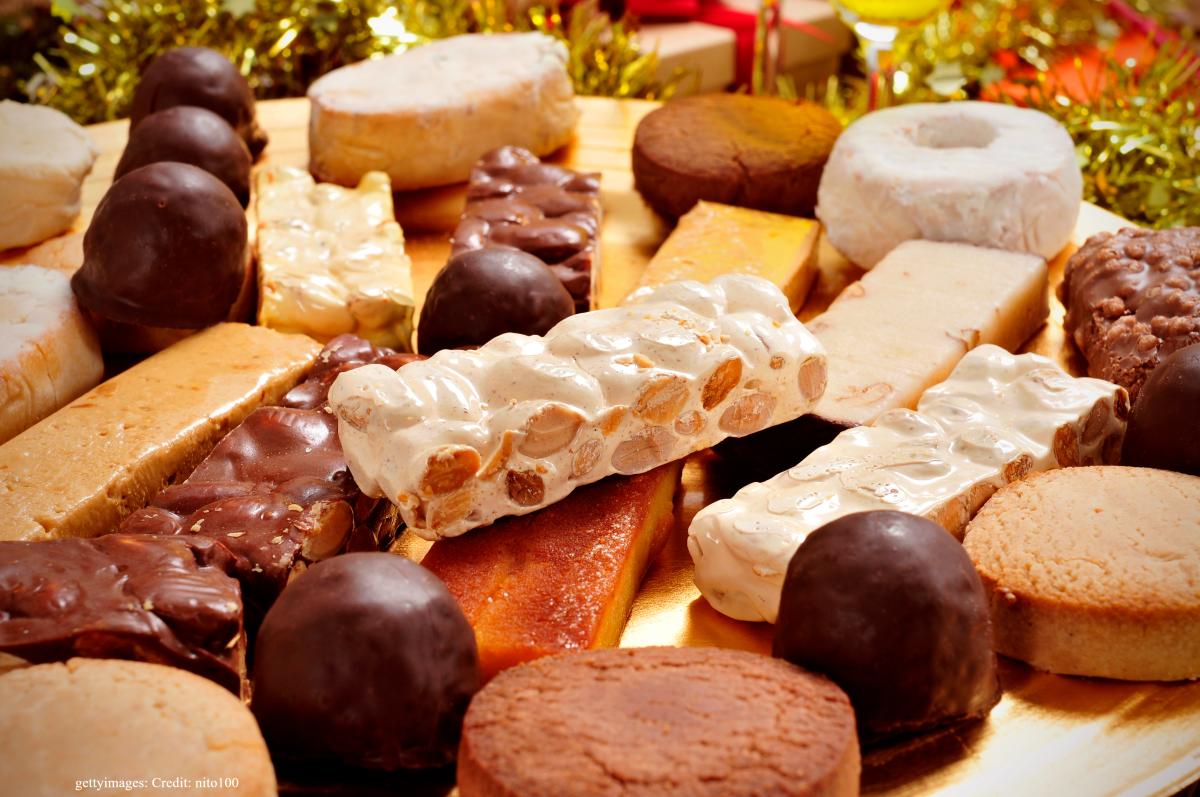There’s nothing like cookies at Christmas. Whether soft and chewy, crispy or crunchy, scented with spices, studded with fruit or dusted with sugar, this time of year brings something for everyone’s palate. But behind every crumb, there’s a tale to tell, with each nibble revealing the story of a place bite by bite.
With appetites eager and stomachs all a-rumble, this is the perfect time to take a culinary tour of some of Europe’s most loved festive sweets and treats.
Gingerbread: The Undisputed King of Christmas Cookies
 Head to any corner of the continent at this time of year and you’ll find that gingerbread is, quite simply, the taste of Christmas. Today, it takes on a myriad of shapes and forms — from soft, sugar-glazed cakes to thinner iced biscuits — but it’s been popular across Europe for centuries. While its origins are hotly debated, by the 16th century, gingerbread was being produced everywhere from Poland to England, with pricey ingredients like black pepper, saffron, cloves and cinnamon often added to a mix of honey and ginger to show off the social status of those serving up this treat. In some corners of the continent, gingerbread was even eaten as a medicinal food, something to be taken to soothe upset stomachs and calm indigestion.
Head to any corner of the continent at this time of year and you’ll find that gingerbread is, quite simply, the taste of Christmas. Today, it takes on a myriad of shapes and forms — from soft, sugar-glazed cakes to thinner iced biscuits — but it’s been popular across Europe for centuries. While its origins are hotly debated, by the 16th century, gingerbread was being produced everywhere from Poland to England, with pricey ingredients like black pepper, saffron, cloves and cinnamon often added to a mix of honey and ginger to show off the social status of those serving up this treat. In some corners of the continent, gingerbread was even eaten as a medicinal food, something to be taken to soothe upset stomachs and calm indigestion.
Today, we of course know it as a decidedly indulgent treat, with different regions offering their own takes on gingerbread. For example, in the English region of Yorkshire, parkin is a cake-like sweet that’s flavoured with treacle and, of course, ginger. If you’re looking for a sample, head to Beverley Festival of Christmas in East Yorkshire to try this and other regional delights. But if your sweet tooth is still not satisfied, head over to Grasmere in England’s Lake District to taste the iconic Grasmere gingerbread. Coming in at somewhere between a cake and a biscuit, you can’t taste this gingerbread anywhere else on Earth.
A Shout Out for Shortbread
 Rich and crumbly, buttery and moreish…shortbread is another festive favourite. Like gingerbread, this is a food that has a long (and somewhat obscure) culinary heritage. Today, we enjoy shortbread in a myriad of shapes — from fingers and hearts to rounds and stars — but the product we now know, and love evolved from the so-called “biscuit bread” of medieval Scotland. This simple dough was originally a mix of flour, yeast and water, baked into a hard and durable (and bland!) rusk. At some point over the centuries, sugar was added and butter replaced yeast, thus enriching the dough with shortening (hence the “short” in “shortbread”) needed to give this biscuit its iconic texture.
Rich and crumbly, buttery and moreish…shortbread is another festive favourite. Like gingerbread, this is a food that has a long (and somewhat obscure) culinary heritage. Today, we enjoy shortbread in a myriad of shapes — from fingers and hearts to rounds and stars — but the product we now know, and love evolved from the so-called “biscuit bread” of medieval Scotland. This simple dough was originally a mix of flour, yeast and water, baked into a hard and durable (and bland!) rusk. At some point over the centuries, sugar was added and butter replaced yeast, thus enriching the dough with shortening (hence the “short” in “shortbread”) needed to give this biscuit its iconic texture.
A luxury treat for many, shortbread was popularised by Mary, Queen of Scots in the 16th century, who is said to have been especially fond of the wedge-shaped variety we’ve come to know as petticoat tails. True to its origins, Scotland is the place to go for this festive treat and — if you like your shortbread with a view — head to the Isle of North Uist in the Outer Hebrides to sample authentic flavour amid windswept scenes.
The Best of the Rest
 For some, the finer differences between cookies, biscuits, cakes and confections are a matter of serious discourse — but not for us! In fact, for the purposes of this blog, our stance is simple: they are all delicious and, even better, can be enjoyed in every corner of the continent at this time of year.
For some, the finer differences between cookies, biscuits, cakes and confections are a matter of serious discourse — but not for us! In fact, for the purposes of this blog, our stance is simple: they are all delicious and, even better, can be enjoyed in every corner of the continent at this time of year.
Northern Ireland’s fifteens are a classic example of a treat that blurs the lines between cookie, biscuit and sweet. This riot of coconut, digestive biscuits, glacé cherries, marshmallows and condensed milk is devoured the whole year round but looks especially jolly at Christmas. And the name? It’s derived from the fact that this treat is meant to be made with 15 marshmallows, 15 digestives and 15 cherries. If you want to try making it yourself, then our friends at Discover Northern Ireland have the perfect recipe.
In the Spanish region of Andalucia, Christmas brings a huge variety of good things. The Moors ruled over this land for centuries, leaving their mark not just on the region’s architecture and culture, but also on its cuisine. Today, the Moorish presence is evident in the copious use of honey, almonds and spices in many Andalucian recipes. If you’re lucky enough to be here during the festive season, try the local nougat — known as turrón — made with honey and almonds or the crumbly shortbread polverones, dusted with cinnamon. If you’re into marzipan, be sure to taste the delicate huesos de santo (that’s saints bones filled with chocolate or jam) or — if you can stick around to Epiphany and you’ve still got some room — try the Roscon de Reyes, a ring-shaped and cream-filled cake eaten on January 6th.
 If you’re still hungry after all that, then a stopover in Norway is absolutely certain to satisfy your sweet tooth. Here, it’s the custom to bake seven different types of Christmas cookies. Why seven? According to tradition, it’s seen as a lucky number and so every year, Norwegians endeavour to fill their tins and jars with a wide range of cookies. The exact recipes and types vary from region to region across the country, but if you need a break from all that sweet stuff, it’s time to rejoice because here, modern Norwegian foodies are pairing their local gingerbread with blue cheese for a sweet and salty jolt. Healthier? Not exactly, but at least it’s something a little bit different for your tastebuds.
If you’re still hungry after all that, then a stopover in Norway is absolutely certain to satisfy your sweet tooth. Here, it’s the custom to bake seven different types of Christmas cookies. Why seven? According to tradition, it’s seen as a lucky number and so every year, Norwegians endeavour to fill their tins and jars with a wide range of cookies. The exact recipes and types vary from region to region across the country, but if you need a break from all that sweet stuff, it’s time to rejoice because here, modern Norwegian foodies are pairing their local gingerbread with blue cheese for a sweet and salty jolt. Healthier? Not exactly, but at least it’s something a little bit different for your tastebuds.
And with that, we’ve chewed and munched our way through the festive season across the continent. With bellies full and waistlines expanded, our culinary tour of Europe’s most loved sweets and treats is over — for another year, at least.


